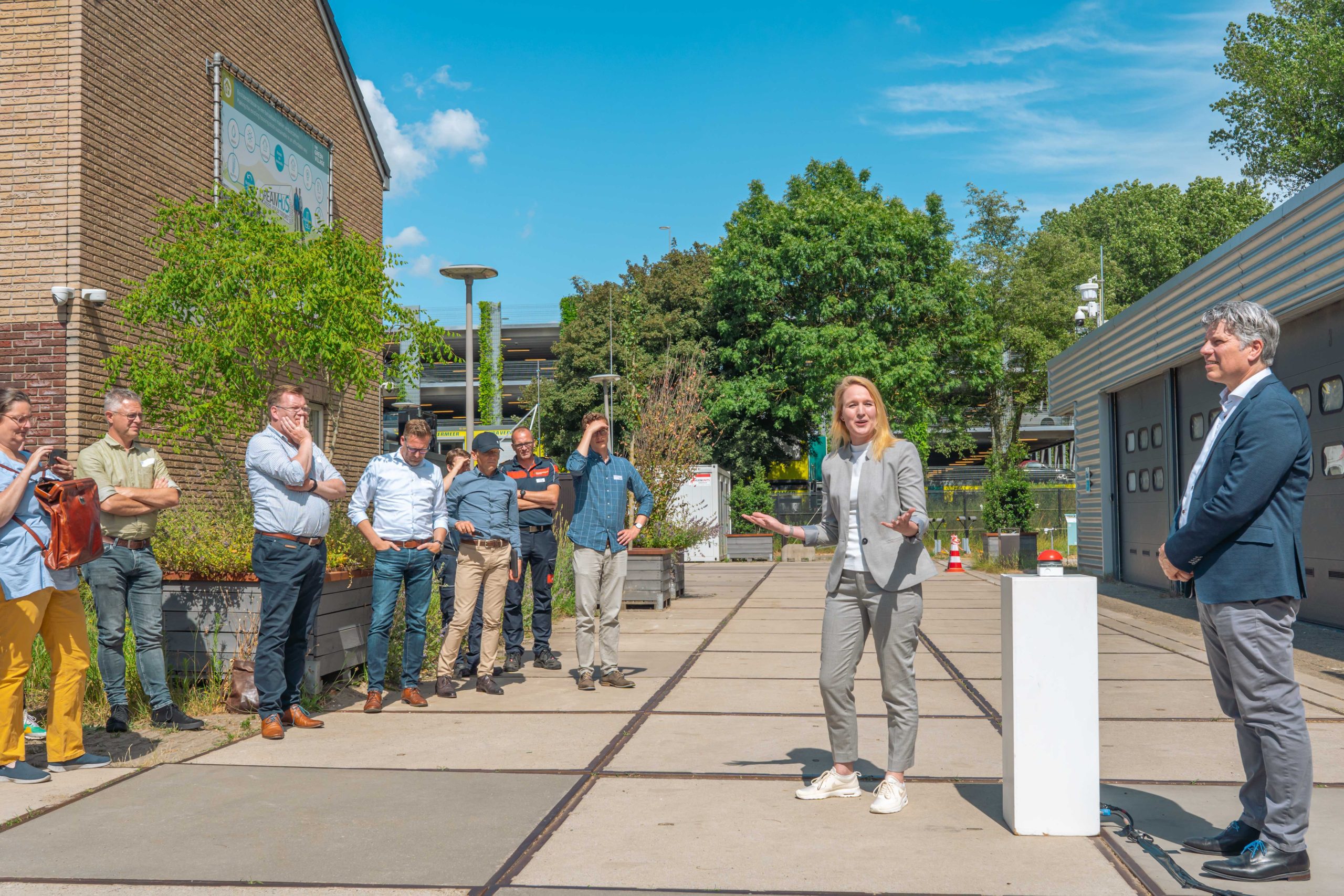Heating houses in a smarter and more sustainable way is the main motivation behind the Open Innovation Heat Network. The new research and testing facility opened last Monday.
The newly opened facility, which itself is connected to the district heating system on TU Delft campus, offers space for research. (Photo: Thijs van Reeuwijk)
English only
After two and half years of construction, the Open Innovation Heat Network (Open Innovatie WarmteNet) at The Green Village at TU Delft Campus is now open for research and testing of innovations in district heating. “We need to get to more sustainable energy systems in the Netherlands and worldwide, and district energy networks are a part of that,” says Arnoud van der Zee, Energy Transition Programme Manager at The Green Village.
District heating, also known as heat networks, consists of a network of pipes that heat buildings across a neighbourhood or entire city. It uses so-called residual heat, often waste heat generated by industry, and modern district energy systems also connect renewables, thermal storage, power grids, thermal grids and heat pumps.
While district heating is already in use – there are currently about 500,000 homes in the Netherlands that are heated by district heating systems, and this number is due to triple in the coming years – there are still challenges in making the heating more efficient and sustainable.
‘We should be using anything that’s hot and that we can get our hands on’
“The heat is often obtained from a cogeneration plant that burns fossil fuels, but the goal is to use more sustainable sources, most likely a mix of sources – anything from geothermal to sewage thermal energy,” explains Van der Zee. “We should be using anything that’s hot and that we can get our hands on. This is the challenge. When it comes to district heating, the mission often seems to be focused on low temperatures, while the goal is to use sustainable heat sources and not necessarily low heat. The real challenge is managing the complexity of using every heat source we can. It’s about smart heating.”
Another challenge is storage, continues the Energy Transition Programme Manager. “As is the case with solar panels, we tend to get the most heat during the summer when it’s least needed. We therefore need to find a way to store it for use in winter. Last, but not least, steering and control of the heat is another topic we need to look into.”
The newly opened facility, which itself is connected to the district heating system on TU Delft campus, offers space for researching all the above topics. It was built on behalf of the Alliander, Enexis Group and Stedin Group network companies, but is available to all scientists and entrepreneurs, says Arnoud van der Zee. “After all, it is better to first test innovations in a controlled environment rather than in real life where you risk leaving consumers in the cold. It’s important to test solutions before they go to market. The network is there to play with for anyone who is interested in heating innovations.”
Heb je een vraag of opmerking over dit artikel?
michaela.nesvarova@gmail.com


Comments are closed.